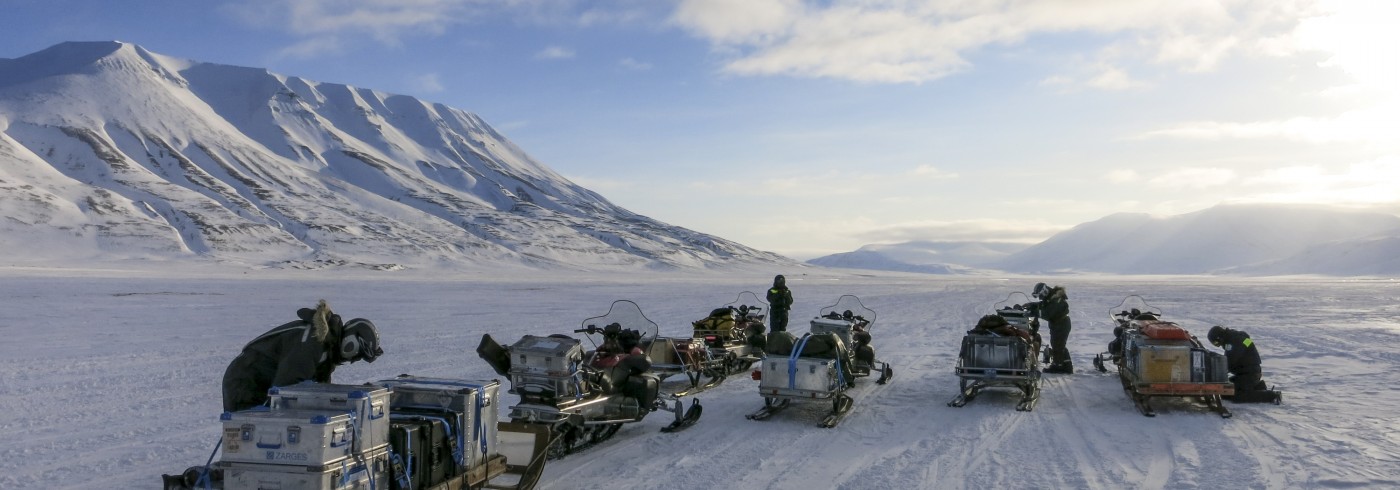Glacier surface and snow conditions on Nordenskiöldbreen, Svalbard
8 April 2015 - 16 November 2015In response to Arctic sea ice retreat, the Svalbard climate is warming at an amplified rate with respect to the global mean. This has a direct impact on glacier melt and subsequent runoff, and thereby on the influx of fresh water into the oceans.

Sergey Marchenko installing a new weather station on top of the ice cap in foggy weather conditions. Photo: Ward van Pelt
We aim to increase our understanding and improve our estimates of the climate impact on mass loss of Svalbard glaciers. This requires improved knowledge of mass and energy exchange at the glacier surface and the connection to the underlying snow, which acts as a reservoir for meltwater in refrozen and liquid form. Ultimately, in order to make a long-term assessment of glacier development, we need information on how the surface mass changes are connected to glacier ice dynamics.
Observations have been conducted on Nordenskiöldbreen, in central Svalbard, since 1997. Data include on-site observations of the surface mass balance, using stakes. Meteorological conditions have been observed through weather stations, and radar has been used to examine ice thickness and snow conditions. Ice cores, firn cores and snow pits have also been measured and collected in order to learn more about the snow conditions. Ice motion has been observed using GPS.
The resulting dataset not only helps to monitor ongoing glacier mass changes and ice dynamics, it also contributes to improved process understanding and development of models simulating glacier evolution.




